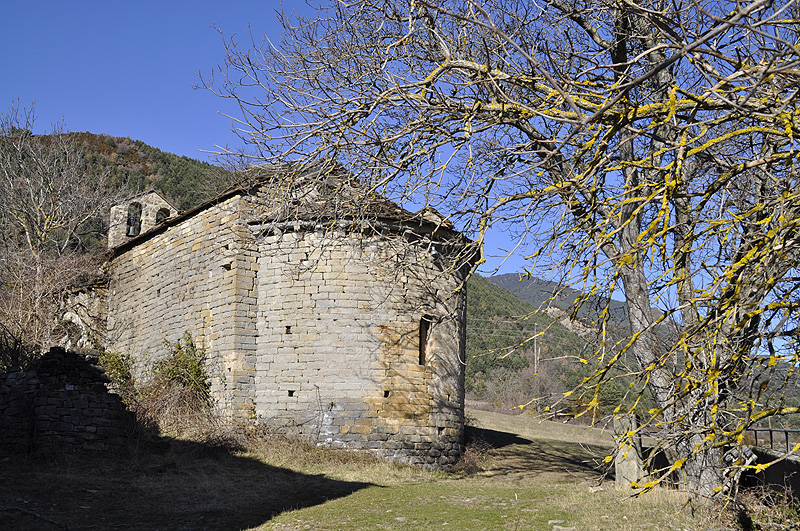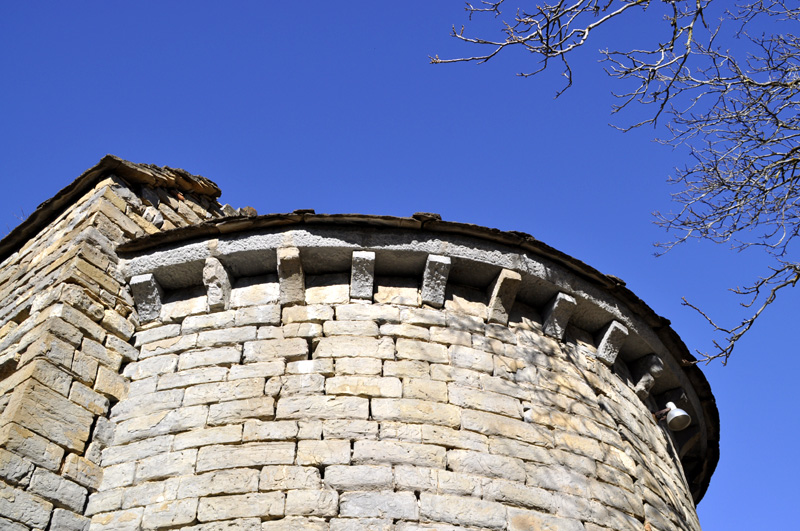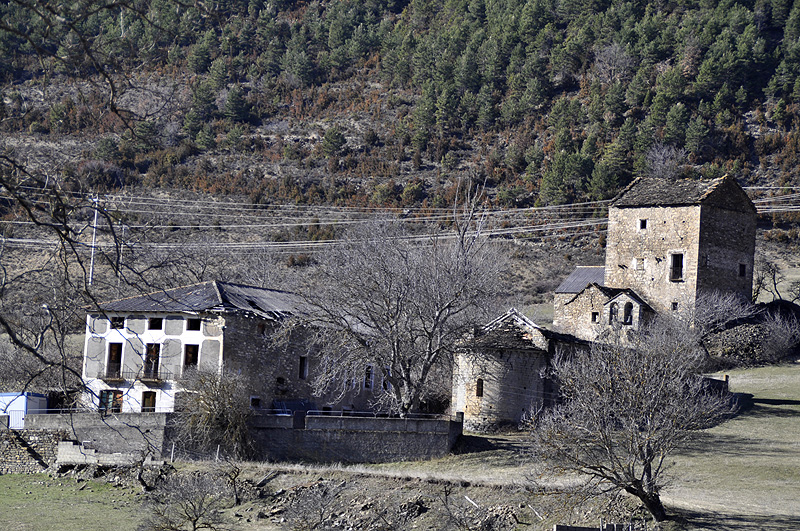The abandoned village of Aruej, a part of the Villanúa municipality, has a historic significance largely unknown to the inhabitants of this area. This is in some way reflected by the fact that in the Middle Ages, Aruej (known at the time as Aruex or Arruex) was the name of the valley between Collarada to the north and the straits of Torrijos to the south, or in other words, to the Aragón river valley between Villanúa and Castiello (thus “Val d’Aruex” or “Bardaruex”). Aruej was a nobleman’s house belonging to the Acín family for centuries and had its own town hall until the 19th century. Its properties extended along the entire right bank of the river Aragon, including the Estiviellas pass in Los Arañones (Canfranc). The Lords of Aruej had partial authority over Villanúa and its dependencies, possibly a vestige of greater territorial rights in times past. The collection of buildings includes several noble houses in a state of ruin, a 14th century fortified tower and the Romanesque church of St Vincent.
When the Madoz dictionary was published only two houses still existed and the church was annexed to the one in Villanúa. Despite this, and in spite of its limited population, it still had its own town hall. At the time there were apparently 18 inhabitants (souls), although 13 years later in 1858, these had dwindled to a total of 8. Today it is still a privately-owned property, waiting patiently for the restoration that its architecture and history deserve.
The parish church of San Vicente Martir (St Vincent the Martir) was built in the second half of the 11th or beginning of the 12th century, following the Romanesque style predominant in the Jacetania area. The church maintains its original layout. It is rectangular and very simple in structure, with a single nave and a semi-circular apse facing east. Originally, it would have had a gabled, wooden roof as was the custom at the time.
The apse, of fine masonry like the majority of the walls, is barely ornamented. Of the 16 corbels of the cornice only two are decorated, one with a zoomorphic figure and the other with scrolls of hispano-muslim origin, also present in the cathedral in Jaca. In the centre of the apse there is a window, almost its only decorative feature, with a rounded arch made of stone sections.
The doorway that opens to the south stands proud of the wall and is sheltered by a small roof which is supported by simple corbels. It has 4 diminishing, round-headed arches which rest on their respective rectangular pillars. The stone lintel supports the tympanum which has no decoration and is filled in with stones.
In the 18th century, the church was partially destroyed by fire and at present it is in a state of almost complete ruin. In January 2010, it was added to the Red List of Hispania Nostra, an non-profit organisation that defends Spain’s architectural heritage.
Also consult...
¤ Monuments
¤ Nature
¤ Villages
¤ Sport
¤ Tourist Offices
¤ Museums and Interpretation Centres
Guided tours 360°
Ciudadela de Jaca
[Español] · [Inglés]
Monasterio de San Juan de la Peña
[Español] · [Inglés]
Fort du Portalet
[Español] · [Francés]
follow us in...




 Comarca de La Jacetania
Comarca de La Jacetania
C/ Ferrocarril s/n 22700
JACA (Huesca)
T. (+34) 974 356 980
F. (+34) 974 355 241
:: Oficina de Turismo de JACA: 974 360 098
:: Oficina de Turismo de CANFRANC:
974 373 141
Site Map









